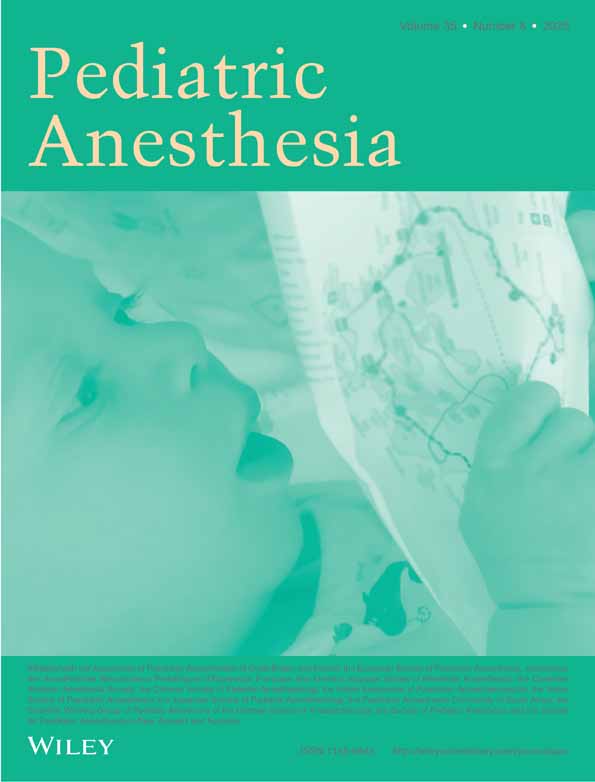Anaesthesia for magnetoencephalography in children with intractable seizures
Summary
Background Magnetoencephalography (MEG), a noninvasive technique for evaluation of epileptic patients, records magnetic fields during neuronal electrical activity within the brain. Anaesthesia experience for MEG has not yet been reported.
Methods We retrospectively reviewed records of 48 paediatric patients undergoing MEG under anaesthesia. Thirty-one patients (nonprotocol group) were managed according to the anaesthesiologist's discretion. Premedication included oral midazolam, chloral hydrate or fentanyl oralet, intravenous midazolam or inhalational anaesthesia with sevoflurane. Anaesthesia was maintained with propofol, midazolam, fentanyl, alone or in combination. A subsequent protocol group (17 patients) received chloral hydrate as premedication and propofol for maintenance of anaesthesia.
Results There was an overall 25% failure of interictal activity and localization on the MEG scan. In the nonprotocol group, 11 scans failed (35.5%). Of these, eight (72.7%) received midazolam orally. Only one failure (5.8%) was recorded in the protocol group in a patient who received chloral hydrate as sedation supplemented by sevoflurane.
Conclusions In our experience, midazolam premedication resulted in a high MEG failure rate (73%). Chloral hydrate premedication and propofol maintenance resulted in a lower incidence of MEG failure (5.8%). General anaesthesia with a continuous infusion of propofol or sevoflurane appears acceptable, although, lighter levels of anaesthesia might be required to avoid interference with interictal activity of the brain.




